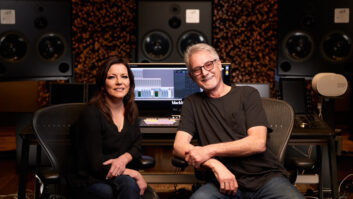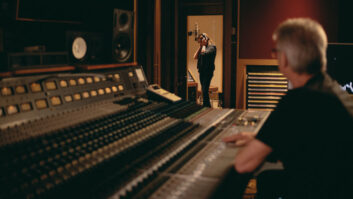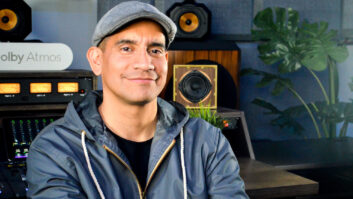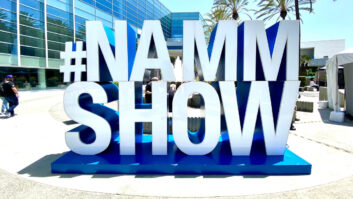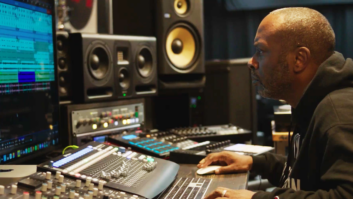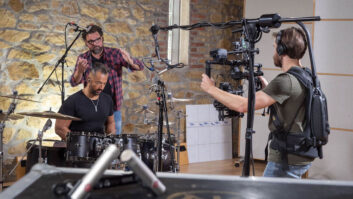It’s been quite a last couple of years for the young New York-based producer/songwriter/musician/remixer/programmer who goes by the colorful moniker Che Guevara. (Che is his real first name; his father was politically active in the ’60s and named his son after the Cuban revolutionary.) He worked on Lauryn Hill’s groundbreaking debut, The Miseducation of Lauryn Hill (producing “To Zion” and doing considerable programming and arrangement work throughout); Wyclef Jean’s Platinum album, The Carnival; Destiny Child’s smash remix of “No, No, No, No”; Aretha Franklin’s Gold single “A Rose Is a Rose”; Ol’ Dirty Bastard’s “Ghetto Superstar” from the soundtrack for Bulworth; and a plethora of other acts, including Naughty By Nature, Brand Nubian, Will Smith and Harlem World.
That’s quite a resume of R&B heavies, yet on the day I spoke with Che he was working on something quite different. “Believe it or not, it’s kind of a country thing,” he says with a chuckle. “I’m scoring a film for Fox Searchlight Films called Whiteboys. It’s a satire on white boys wanting to be gangsta thugs. It’s set in Iowa, and it’s pretty hysterical. This is my first score, and it’s not what you’d call traditional. I’m mixing beats with country and western feelings. There’s some comical stuff, a lot of experimentation. I’m really enjoying it.”
A native of Boston, Che was always a music fan with eclectic tastes, but it wasn’t until he went to Hampton University in Virginia (as a finance major) that his musical and engineering proclivities came to the fore. “I took the one engineering course they had there,” he recalls, “and though I can’t say that it was that informative, it gave me the basics and it interested me enough that I wanted to look into it more. So after that, I learned a lot just from sitting in on sessions with people, reading manuals, working with different engineers. Maybe three years later I was pretty up on most equipment and I started working on my own things and doing some work on tapes.” He also began to DJ and developed quite a rep for himself in that area.
Che’s first break came when a friend sent a tape Che had made to Virginia’s top R&B producer, Teddy Riley. “I had already met him and knew him a bit,” he says. “I think I had five tracks on there, and he liked three of them and eventually he offered me a contract. He also took me down to Trinidad for five months, and we did some work down there. Originally, it was going to be the Guy reunion album, but that fell apart and we ended up doing Blackstreet.” Later, Che and Riley parted ways, and Che moved to northern New Jersey and started to immerse himself in the New York scene, making contacts wherever he could. During this period, he hooked up with Wyclef Jean, fresh out of The Fugees, and that led to his meeting Wyclef’s former bandmate, Lauryn Hill.
“We hit it off right away, and I worked with her on a few different projects,” Che says. “I did the Aretha Franklin song with her. We did something for CeCe Wynans. Then, when Lauryn’s album project came up, she asked if I wanted to co-produce with her.” In the end, Che was credited with production on just one track, but his imprint is all over the album, which he was a part of from the early songwriting stage.
“Sometimes she might have already written lyrics and had a melody in mind; sometimes there was even less,” Che says. “She’s very hands-on, involved and detail-oriented. She was already proficient on the Akai S3000. Sometimes she might have a sample idea she wanted to build on. There were times I brought a track I was working on to the table to see if she dug it. Sometimes she’d like a portion of it, and we’d build on that.” In the case of “To Zion,” “she had a song that she had written lyrics and a melody to, and then I brought her a track I had, and she put the lyrics to it. I had the flamenco guitarist that played a line, and she said, ‘You know, I have a relationship with Carlos Santana,’ so we went down to Miami and did that down there. Mostly we worked at Chung King and Sony and a little at RPM. Toward the end of the project, she built a room in her house, and we did some stuff there, too.
“It was a positive experience, but it sure took a long time to put together. In all, we worked on it for eight or nine months. You always feel like things could be better, but overall I was very happy with how it came out. I was pretty surprised at how successful it was. When you do something new and different, you never know how it’s going to be accepted in the mainstream.”
Though Che will continue to work at a number of New York studios-besides Studio E at Sony and the Red Room at Chung King, Che favors Studio C at the Hit Factory-he’s been setting up his own personal studio in Soho based around a Mackie digital console, Yamaha 02Rs, DA-88s, Avalon 737 mic pre’s and a selection of new and old keyboards and guitars. “I have a Wurlitzer and a Rhodes; I like those kind of flavors,” he says unapologetically. “I love the new technology, but I’m also stuck in that ’70s feel. If maintenance wasn’t an issue, I’d probably have a 2-inch in my room. I love music from every period, but I’ve been getting into a lot of ’60s and ’70s stuff. I’m a huge, huge Curtis Mayfield fan. I love The Beatles; Earth, Wind & Fire; Sly & the Family Stone; Aerosmith…I’m a record junkie. But most of the music I’m making is more ‘today’ than that. In recent days I like D’Angelo’s stuff. I like some of the grooves on R. Kelly’s last album. As far as hip hop is concerned, the guy who got me interested in producing to begin with was a guy named DJ Premier; I love his stuff.”
All this piecemeal work in writing, arranging and production that Che has done for others naturally begs the question, is there a solo album in his future? “I think so. I’ll probably do one that’s all music. I may feature different artists on various cuts. It’ll be a nice groove album, like a Brand New Heavies-type project. It’s in the plans, but there are a few artists I’m going to work with first. I have this young lady from Milwaukee named Melissa Mathis who’s like 16. She’s like a younger Alanis Morissette, if I have to compare her to somebody-a really cool vibe. I’ve got one hip-hop guy from Boston, who’s a little like Nas. I’ve got an alternative rock band. I’ve got a lot of stuff I wanna do. But I’ve got time…”

